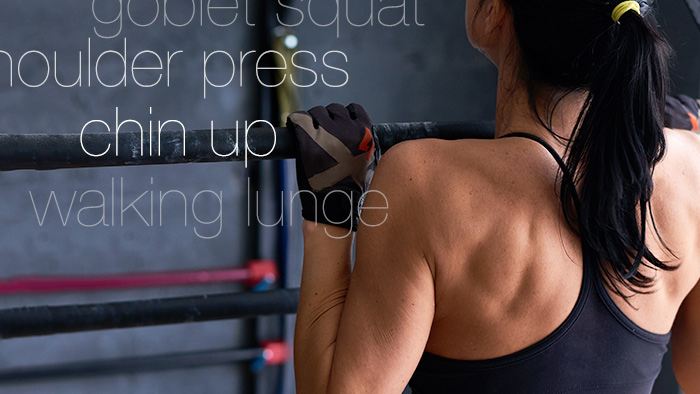Once you have established a base of strength training experience, you will be ready for more advanced movements to continue improving and maximize your time in the gym. To continue progressing, you may consider two different approaches: adjusting the training variables or choosing more advanced movements (from low skill to high skill movements).
To demonstrate these approaches, let’s look at the squat, one of the core exercises to improve leg strength (which translates to a pedal stroke in cycling or foot push-off in running).
Training Variables
There are many training variables that can be adjusted to progress your workout. A few variables you may consider are: reps, load, rep tempo, rest between sets, and range of motion.
The most basic of these variables are reps and load. When you can complete 12 squats with good form, you can make the movement more challenging by increasing the number of reps or the increasing the weight lifted.
Rep tempo is an advanced variable that impacts the time under tension for the target muscle groups. When performing a squat, your tempo may be: 2 seconds to lower, 1 second pause, 2 seconds to return to standing, and 2 seconds to rest. That results in 5 seconds of time under tension, with even effort on the eccentric and concentric movements.
To encourage more muscle growth, which translates to more strength and power, you can manipulate this tempo to increase the time under tension. When you slow down the eccentric portion of the squat (the downward phase), you cause more muscle damage that encourages growth. An adjusted tempo could be: 4 seconds to lower, 2 second pause, 2 seconds return to standing, and 1 second rest. This increases your time under tension to 8 seconds per rep, with twice the time on the eccentric movement.
These training variable adjustments allow you to increase the difficulty of a workout without changing the exercises performed.
Exercise Progressions
Another option to progress your workouts is to choose higher skill movements as you master the lower skill movements with excellent form. Once you have mastered a back squat, for example, you can increase the difficulty by progressing to a front squat or overhead squat. Your first goal should always be to complete the movement with good form, as pushing through a movement with poor form can lead to injury and will not help you achieve the goal.
If you find that the back squat is a challenge to complete with good form, you can regress the movement to a goblet squat or wall sit until you master those movements and are ready for a progression.
Unilateral movement (single leg or single arm) is another progression that is particularly helpful for endurance athletes, by helping address or prevent muscular imbalances. A single leg squat or split squat are both great options to keep your legs equally strong and adds the challenge of stability to your movement.
Additional progression examples:

These variables and progressions will help you take your strength training to the next level. If you are looking for a strength program to help you improve as a triathlete, download my free strength training plan for runners and triathletes.



